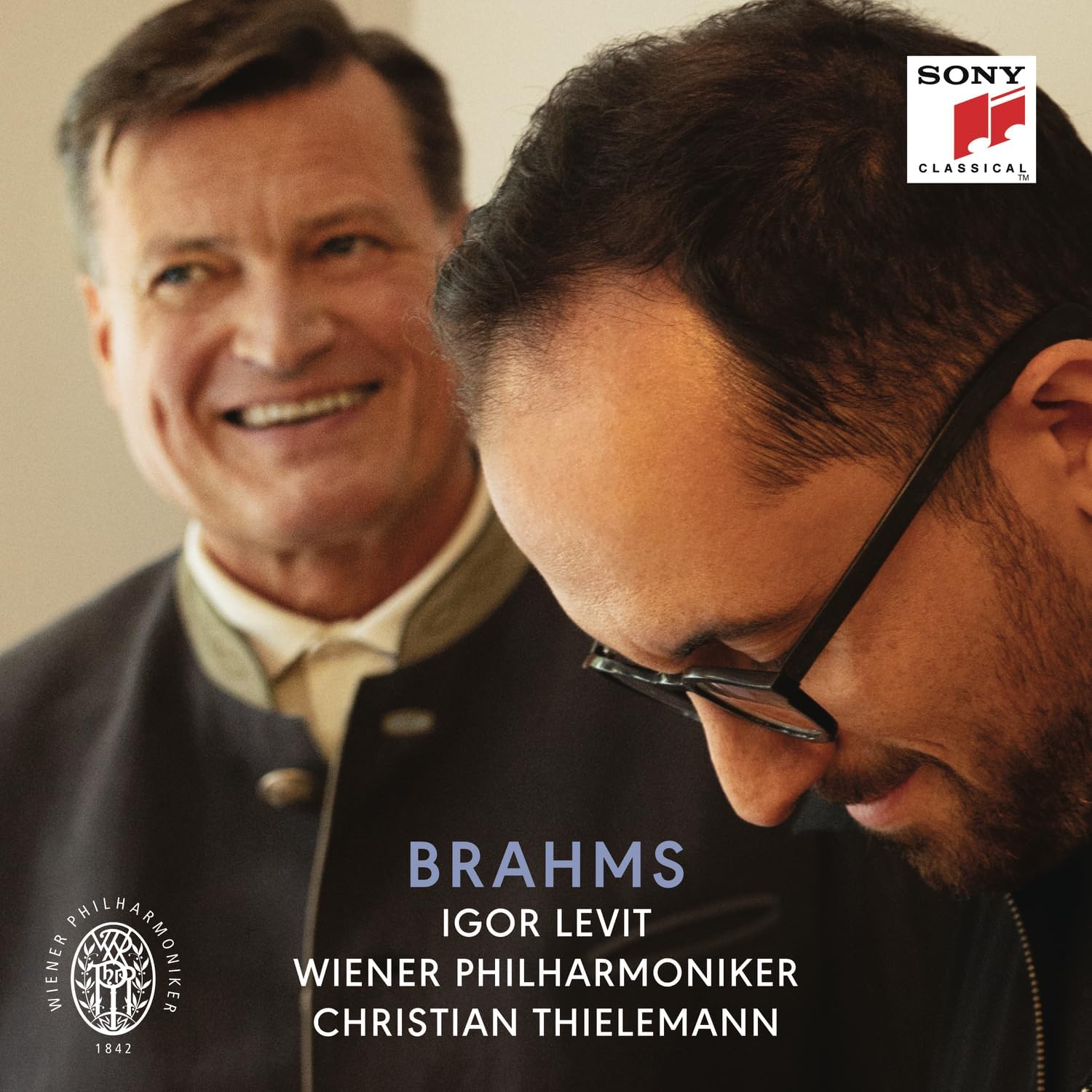 Brahms: Piano Concertos 1 and 2, Solo piano works Igor Levit (piano), Wiener Philharmoniker/Christian Thielemann (Sony)
Brahms: Piano Concertos 1 and 2, Solo piano works Igor Levit (piano), Wiener Philharmoniker/Christian Thielemann (Sony)
Who’d have thought that Igor Levit and Christian Thielemann would be such effective partners? Levitt is one of the most cerebral and thoughtful of pianists with a string of excellent Sony albums, and there’s the worry that any collaborator won’t successfully step up to his level. But this set of Brahms Concertos is excellent, the dialogue between the two musicians transcribed in this set’s booklet suggesting that this was a bromance made in heaven. Concerto No. 1’s gnarly opening is imposing, the low horns rasping out their pedal notes. I like performances which emphasise the angst, and learning that Levit describes it as “often bitter and dark”, a piece which takes its toll on performers while Concerto No. 2 keeps on giving. Not that Levit is all sturm und drang: the first movement’s second subject feels heroic here, Thielemann making the Vienna strings sing out in response. Brahms’s “Adagio” is unusually tender and the finale is marvellous, capped by an exhilarating dash to the major key close. No. 2 opens with a gorgeous horn solo (google Wiener horn to check out the instrument it's played on), Levit’s playing alternately steely and affable. Levitt describes the feeling of playing the work as akin to having a vitamin infusion, and this is one of the few recent recordings I’ve heard where Brahms’s whimsical finale doesn’t come across as a makeweight. The scherzo swings and Tamás Varga’s slow movement cello solo hits the spot.
All good, but the third CD, containing four sets of Brahms’s late solo piano works, is the highlight. Take the three Op. 117 Intermezzi, dispatched with veiled intensity, or the flamboyance of numbers like Op. 118’s A minor “Intermezzo”. Levit knows exactly when to ratchet up the intensity levels or take a step back; the little B minor “Intermezzo” opening Op. 119 segueing nicely into a restless E minor “Intermezzo”. As a bonus, Thieleman joins Levit for an exquisite four-handed Brahms waltz. Lasting just over a minute, you’ll feel compelled to replay it repeatedly.
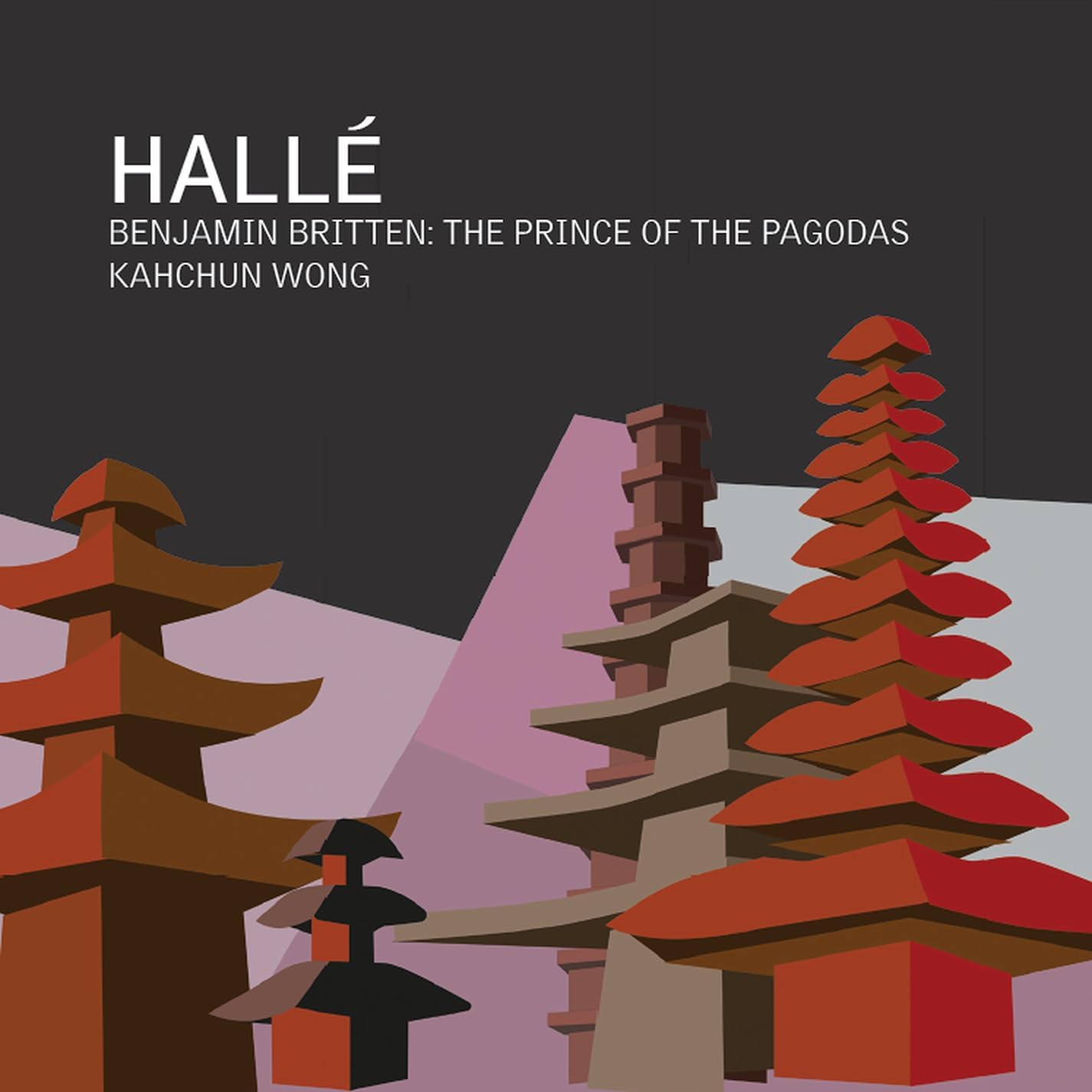 Britten: The Prince of The Pagodas Hallé/Kahchun Wong (Hallé)
Britten: The Prince of The Pagodas Hallé/Kahchun Wong (Hallé)
Elgar: Symphonies 1 and 2 Hallé/Sir Mark Elder (Hallé)
Here’s a pair of releases on the Hallé’s own label: one led by the orchestra’s outgoing Music Director, the other a bold calling card from the new Principal Conductor. I’ve no idea why the two musicians have different job titles, or why this venerable Manchester institution dropped the noun ‘Orchestra’ from its name, but both recordings highlight the ensemble’s strengths. This orchestra does make a distinctive sound, light, transparent and colourful, qualities which come to the fore in this new account of Britten’s neglected ballet The Prince of the Pagodas. I was lucky enough to hear Oliver Knussen conduct most of it at the 1988 Aldeburgh Festival and I’ve loved the score ever since. That performance piqued new interest in the work and Knussen’s pin-sharp London Sinfonietta recording followed soon after. Pagodas is a fascinating, quirky oddity in the Britten catalogue, a full-length three-act ballet scored for a huge orchestra which is among the most accessible and tuneful things he ever wrote; if you’re fond of, say, Prokofiev’s Romeo and Juliet or Cinderella, you’ll love it. Not that the ballet’s creation was a simple process; Britten had worked with choreographer John Cranko while working on the opera Gloriana and looked forward to collaborating with him when he received a Royal Ballet commission in 1954. The pair’s working relationship wasn’t always cordial; Cranko gave the composer a scenario and list of dances and left him alone to get on with it. Britten described the feeling of finishing the full score as akin to having “just been let out of prison after 18 months of hard labour”, the key to the score’s completion found while visiting Bali at the beginning of 1956 and experiencing Balinese gamelan at close hand: Act 2 contains some note-perfect gamelan pastiche on tuned orchestral percussion.
Best not to worry about Cranko’s nonsensical storyline and just enjoy the music. I’d forgotten how much sheer fun there is here – every one of the 48 numbers contains something to raise a smile. Me, I love the spooky trombone glissandi at the start of Act 1 and the cheeky march which follows, and I hadn’t realised that the dodecaphonic “Variation of the King of the West” pokes fun at Schoenberg and Stravinsky. Act 2’s gamelan effects are faultlessly realised, the big trumpet fanfare at the close of “The Pagodas revolve like merry-go-rounds” a widescreen sonic treat. Act 3’s sequence of dances whizzes past before a pithy, exuberant “Apotheosis”. Kahchun Wong’s new version, sumptuously played and recorded over six days, is more expansive than Knussen’s, placing the score firmly in the romantic ballet tradition. You can sense the players grinning with delight at some of Britten’s effects: if you’re new to Pagodas, start here.
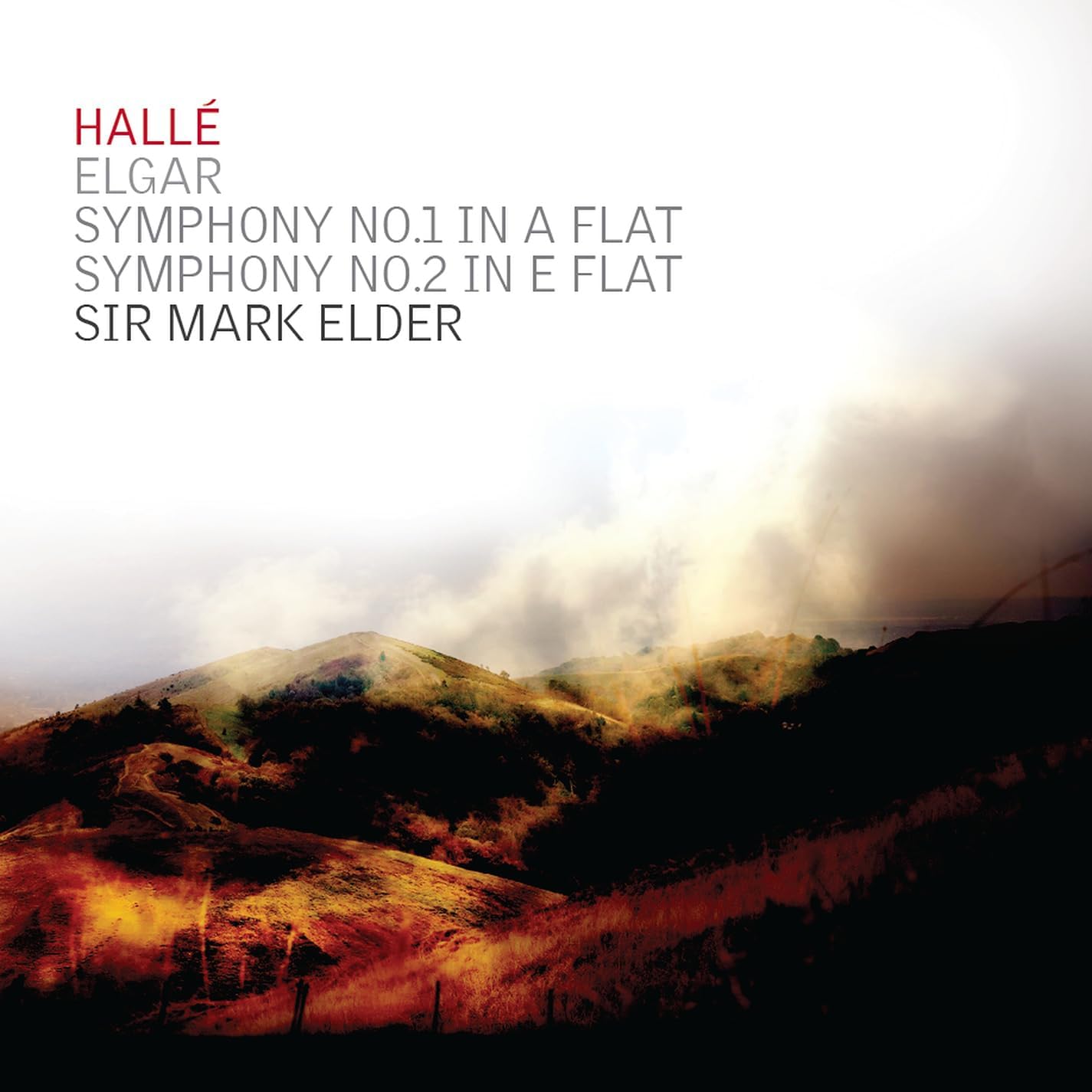 Sir Mark Elder first taped Elgar’s two symphonies in 2001 and 2003 respectively for the Hallé label. These new live versions date from 2021 and 2018, No. 1 ‘recorded under Covid restrictions’ in the Bridgewater Hall. Elgar’s scoring can sound dense and unwieldy, but the Hallé timbre suits these pieces beautifully. Everything is audible, Elgar’s idiomatic divisi string writing especially telling, and there’s some gorgeous playing from principal oboe Stéphane Rancourt. It’s easy to underestimate Elgar and dismiss him as a worthy provincial plodder; performances like these are a useful reminder that both symphonies belong firmly in the late romantic European tradition. That their composer was self-taught never fails to amaze: structurally and texturally, each symphony is a marvel. Highpoints in this account of No. 1 are the two middle movements, the scherzo full of swagger before a magical transition into an unobtrusively lovely “Adagio”. And isn’t it strange that this big work opens in its home key of A flat before switching to a stormy D minor, the big march tune only reappearing in full at the symphony’s close. Elder’s final bars are resplendent, and the socially distanced audience applause is retained.
Sir Mark Elder first taped Elgar’s two symphonies in 2001 and 2003 respectively for the Hallé label. These new live versions date from 2021 and 2018, No. 1 ‘recorded under Covid restrictions’ in the Bridgewater Hall. Elgar’s scoring can sound dense and unwieldy, but the Hallé timbre suits these pieces beautifully. Everything is audible, Elgar’s idiomatic divisi string writing especially telling, and there’s some gorgeous playing from principal oboe Stéphane Rancourt. It’s easy to underestimate Elgar and dismiss him as a worthy provincial plodder; performances like these are a useful reminder that both symphonies belong firmly in the late romantic European tradition. That their composer was self-taught never fails to amaze: structurally and texturally, each symphony is a marvel. Highpoints in this account of No. 1 are the two middle movements, the scherzo full of swagger before a magical transition into an unobtrusively lovely “Adagio”. And isn’t it strange that this big work opens in its home key of A flat before switching to a stormy D minor, the big march tune only reappearing in full at the symphony’s close. Elder’s final bars are resplendent, and the socially distanced audience applause is retained.
There’s applause after Symphony No. 2’s quiet close too, though the audience do have the courtesy to wait a good few seconds before erupting. The first movement is ideally paced, the development’s creepy processional suitably unsettling. I find this work emotionally richer than its predecessor, the prevailing sense of unease never dispersing. The string playing is terrific, and it’s good to hear the harps so clearly. Horns are great too, especially in the first movement’s exultant coda. Elgar’s finale can sound as if it’s been borrowed from a different work, but Elder makes it hang together, the subdued ending which baffled contemporary audiences sounding here like a poignant leave taking. Good sleeve notes and engineering seal the deal: this set is well worth acquiring.
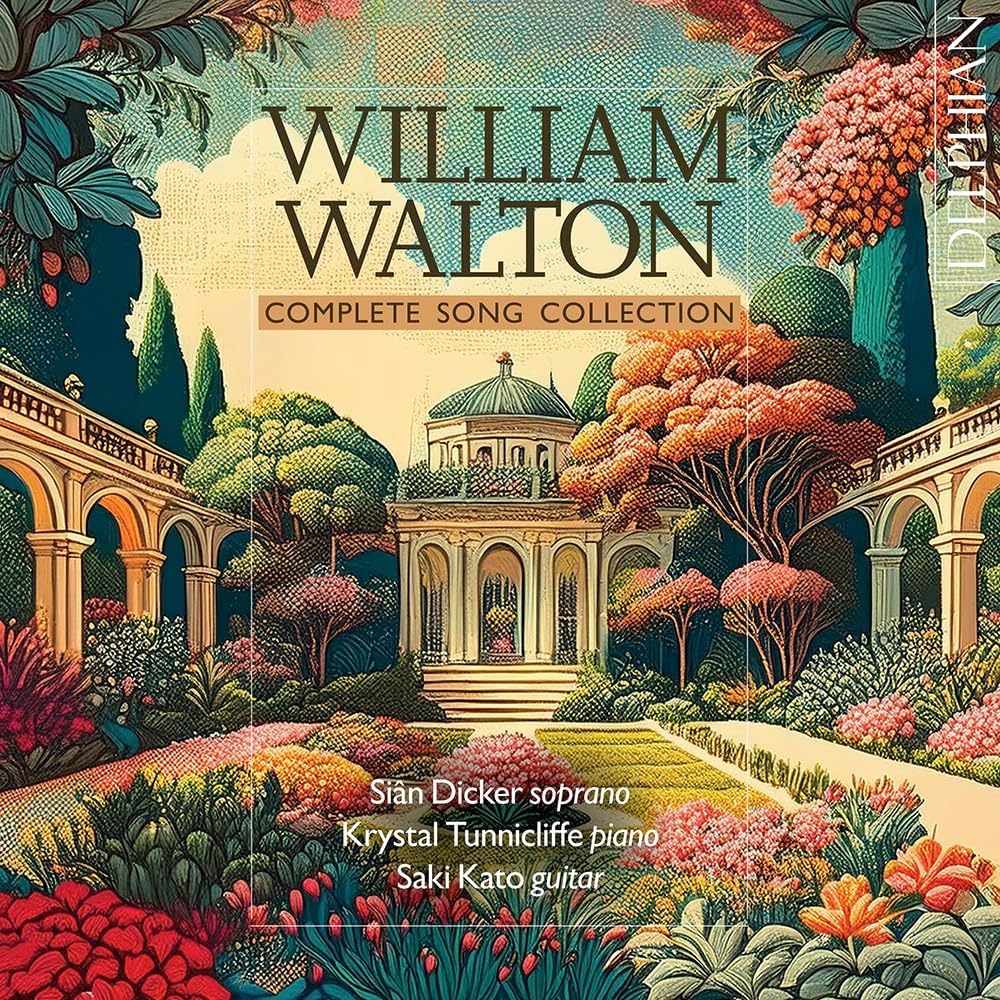 William Walton: Complete Song Collection Siân Dicker (sop), Krystal Tunnicliffe (piano), Saki Kato (guitar) (Delphian)
William Walton: Complete Song Collection Siân Dicker (sop), Krystal Tunnicliffe (piano), Saki Kato (guitar) (Delphian)
The accompanist Gerald Moore was a fan of William Walton’s songs, but wondered aloud: “everything WW is impressive – why the devil doesn’t he write more songs?” Indeed, the complete Walton songs as presented here only amount to 53 minutes, comprising just two substantial cycles and assorted sundry items. But the two cycles are worth hearing, and soprano Siân Dicker make Moore’s case persuasively for him. Walton himself started out as a singer – a chorister at Christ Church Cathedral School from the age of 10 – but most of the songs emerged later in his career. The exceptions are the early songs written when he was an undergraduate, some lost for many years, only published in in the 21st century, and first recorded here. The four Swinburne settings have a sincerity sand seriousness a long way from the sophisticated wit of Façade. “The Winds” is the most striking of these student essays, with a turbulent piano part and dramatic vocal, in which Dicker really lets fly.
The three sung arrangements from Façade are part of the complex history of that piece. Made by the composer in 1931-2 they lack the magic of the narrated originals, and the piano is no substitute for the colourful instrumentation of the original. They are surely only here for the sake of completeness. Of the two cycles, both from the 1960s, Anon in Love was a commission for the Aldeburgh Festival, where it was performed by Peter Pears and Julian Bream. The guitar part is impressively realised for a composer who had never written for the instrument before (he was coached by Bream). It is played here with relaxed humour by Saki Kato. “Fain would I change that note” has a sensual vocal line that soars and dips, “My love in her attire” pits an athletic vocal line against a darting guitar, and the finale “To couple is a custom” is saucy and wry, and Walton at his best.
Meanwhile, A Song for the Lord Mayor’s Table which opens the album, is the most substantial piece, premiered by Elisabeth Schwarzkopf and Gerald Moore. The texts celebrate the City of London, moments of serenity sitting amid evocations of the bustle of the capital. “Glide gently”, setting Wordsworth’s poem about the Thames, is exquisite while in “The Contrast” Dicker and Krystal Tunnicliffe turn on a sixpence to capture the satirical opposition of the outgoing bonhomie of city life versus the boredom of being in the country. Bernard Hughes
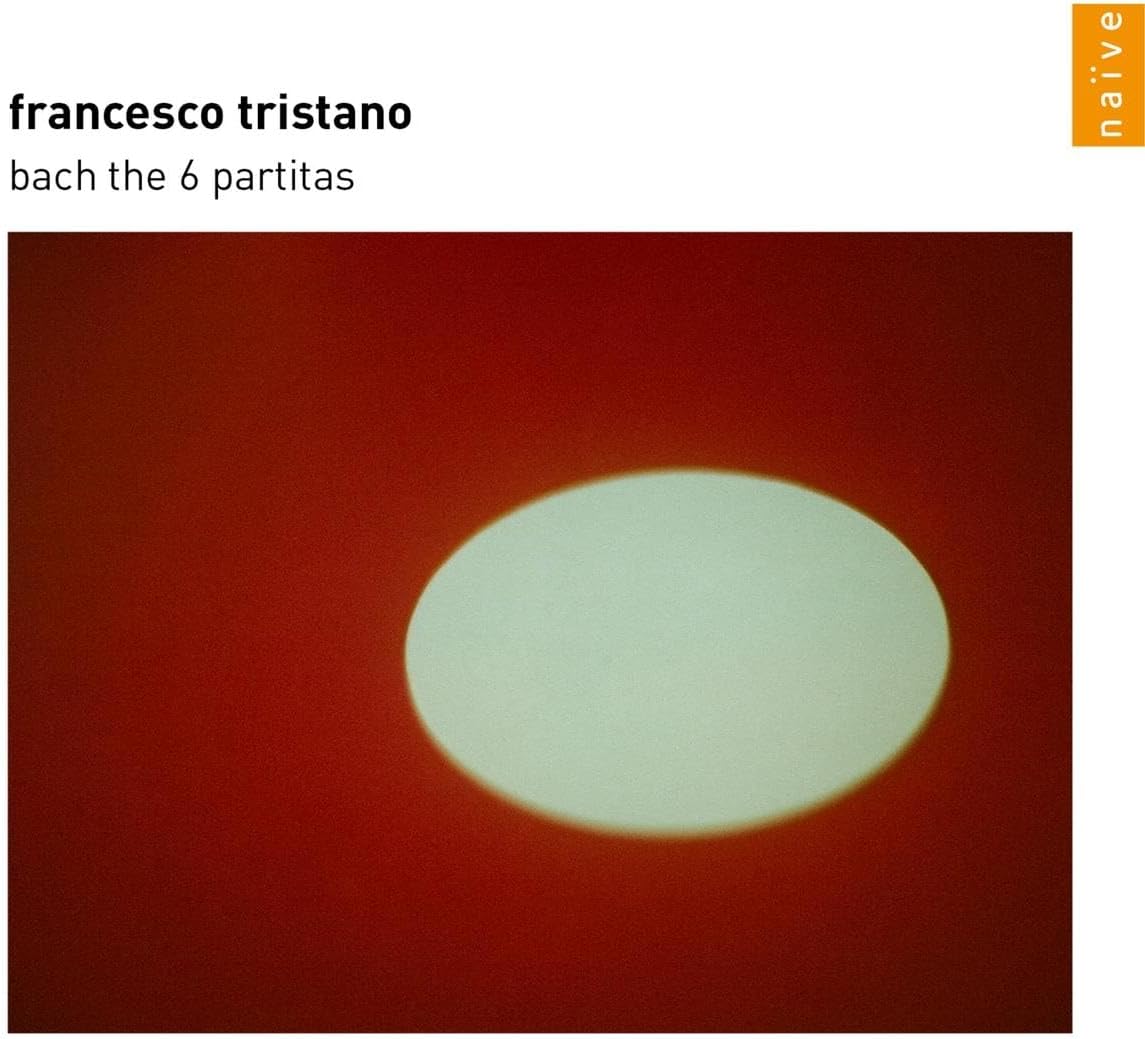 Bach: The Six Partitas Francesco Tristano (piano) (Naïve)
Bach: The Six Partitas Francesco Tristano (piano) (Naïve)
Vivaldi: Concerto per violin X ‘Intorno a Piserndel’ Julien Chauvin (violin and dir.) Le Concert de la Loge (Naïve)
Vivaldi: Concerto per violin XI ‘Per Anna Maria’ Fabio Biondi (Violin and dir.), Europa Galante (Naïve)
Passion Stella Almondo (piano) (Naïve)
Eternity Piano Duo Gülru Ensari Schuch (piano duet, two pianos) (Naïve)
Here are five more jewels from the revivified Naïve catalogue that have recently caught my ear. And my eye; this label, like ECM, has a distinctive house style. Francesco Tristrano’s set of Bach Partitas is the first volume of a projected survey of Bach’s complete keyboard output. Tristano’s fondness for the physical product sits well with me (“… it is an object that you can hold in your hands, that you listen to with the help of a player. Anachronistic? No doubt…”). Taped in Japan on a modern Yamaha (“perhaps the most sensational piano I have played in my entire life”), it’s beautifully engineered. Play these discs to a purist who only listens these works on a harpsichord and you’ll soon convert them. Tristano’s performances can dance and glitter; sample his brisk take on Partita No. 1’s closing gigue and be dazzled. He can also do introversion, as with Partita No. 2’s brief “Sarabande”, but you’ll love this set for the joie de vivre brought to the faster dance movements. The tiny “Scherzo” from No. 3 stomps and spits, and the “Passepied” from No. 5 is a riot.
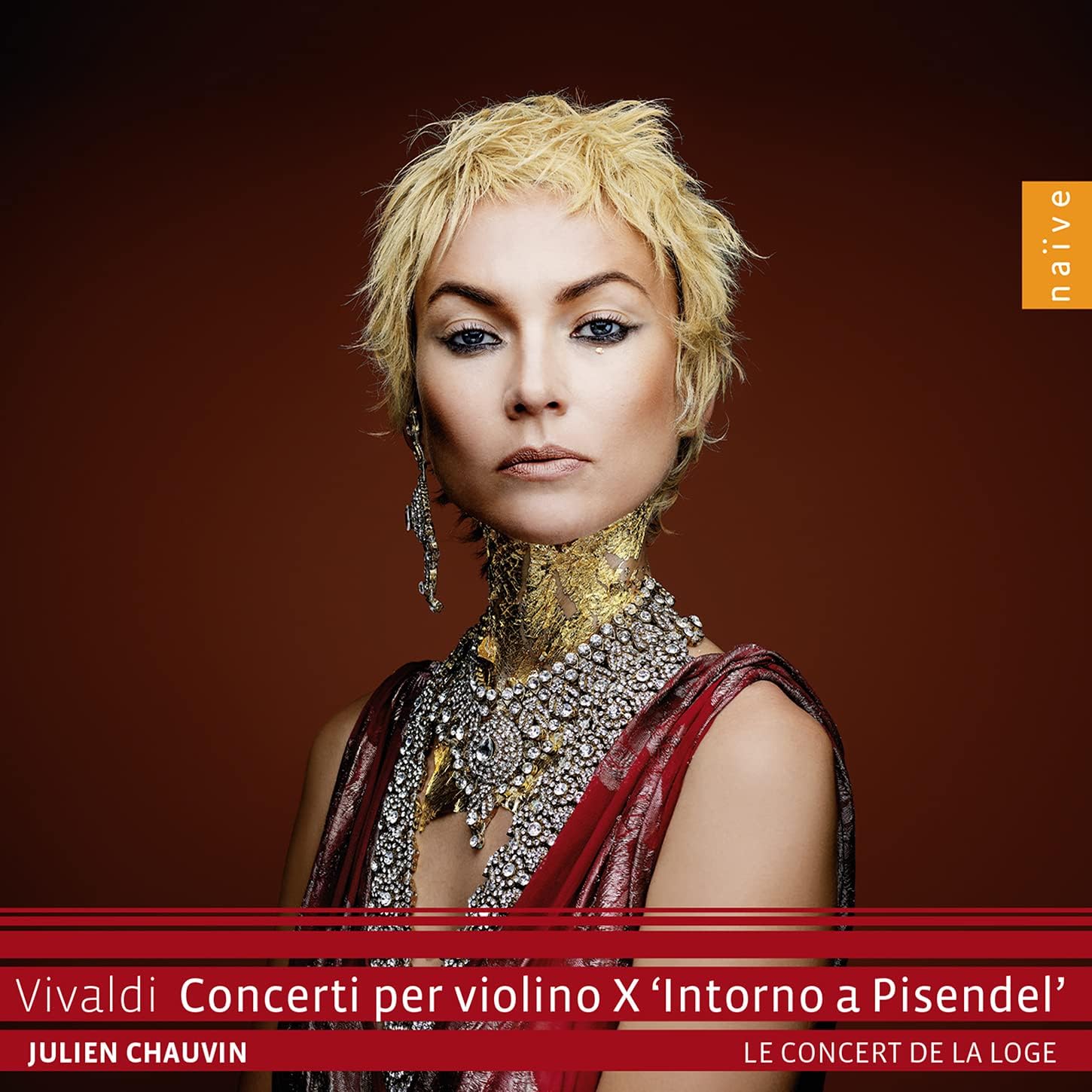 Vivaldi composed over 200 violin concertos. Naïve plans to record them all, which will require a hefty box when done. Volume 10 celebrates Vivaldi’s relationship with the Dresden violinist Johann Georg Pisendel. We get six concertos: three expressly written for Pisendel, three more transcribed by him. They receive exuberant, zesty performances from Julien Chauvin and Le Concert de la Loge, the faster movements sometimes pushed to the limit but never sounding flash or showy. It’s the slow movements which got me hooked. Try the “Largo” of RV 226, Chauvin soaring, effortlessly, over a delectable pizzicato accompaniment, or RV 237’s tiny “Adagio”, the glorious solo line supported by soft semiquavers. The movement lasts less than two minutes but feels so much bigger; listening to it may send you into a trance. A wonderful disc.
Vivaldi composed over 200 violin concertos. Naïve plans to record them all, which will require a hefty box when done. Volume 10 celebrates Vivaldi’s relationship with the Dresden violinist Johann Georg Pisendel. We get six concertos: three expressly written for Pisendel, three more transcribed by him. They receive exuberant, zesty performances from Julien Chauvin and Le Concert de la Loge, the faster movements sometimes pushed to the limit but never sounding flash or showy. It’s the slow movements which got me hooked. Try the “Largo” of RV 226, Chauvin soaring, effortlessly, over a delectable pizzicato accompaniment, or RV 237’s tiny “Adagio”, the glorious solo line supported by soft semiquavers. The movement lasts less than two minutes but feels so much bigger; listening to it may send you into a trance. A wonderful disc.
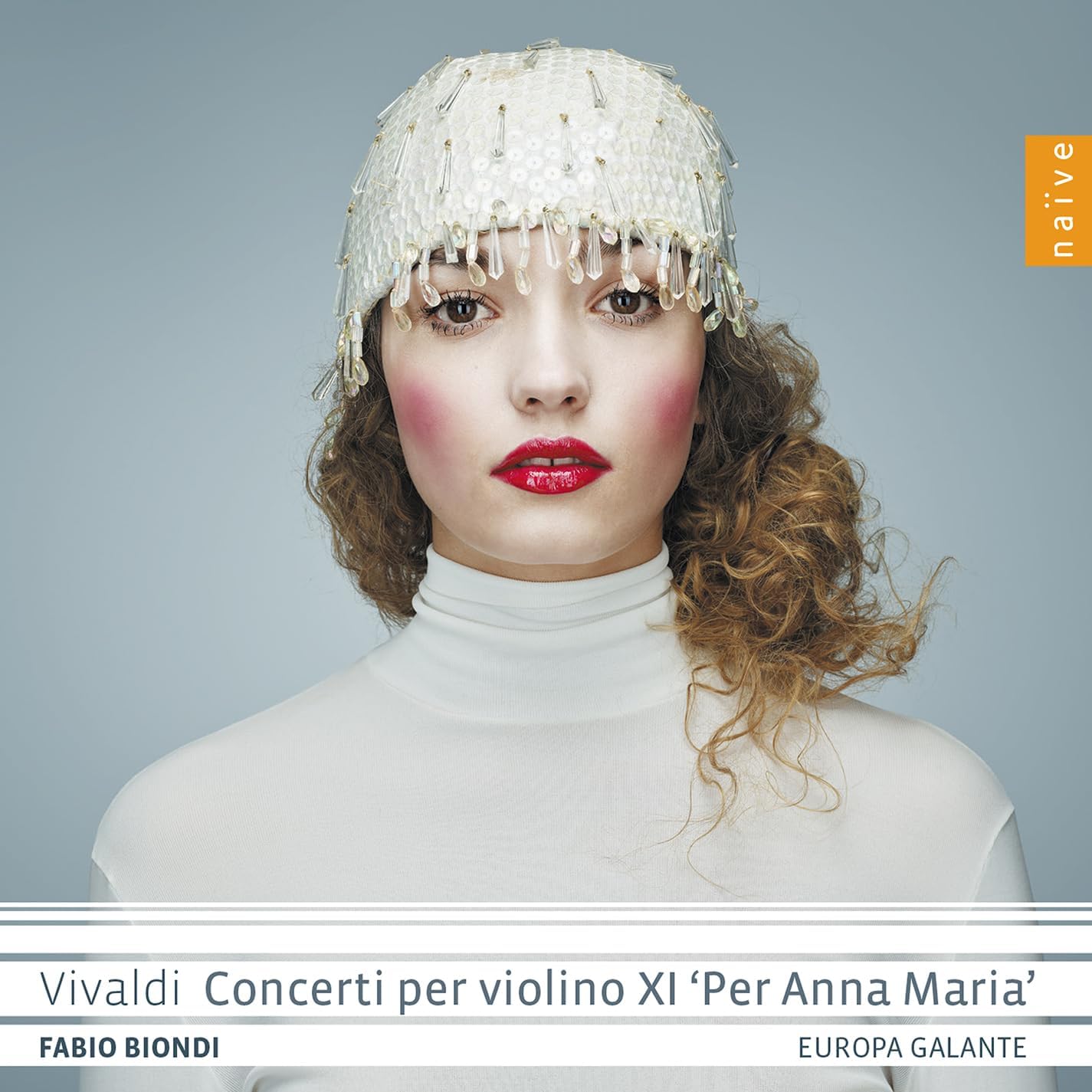 Fabio Biondi and Europa Galante take charge for Volume 11, this time featuring six works associated with one Anna Maria, a gifted instrumentalist based at the Ospedale della Pietà in Venice. There’s no evidence that these pieces were composed for Anna Maria, though we know that her repertoire included 24 Vivaldi concertos. You’re continually amazed by how much mileage Vivaldi gets from a simple chord progression or melodic idea, like the rising arpeggios at the start of RV 179a, or the repeated E major chords opening RV 207’s finale, though it takes some interpretive panache to make sure that the music never sounds dull. Biondi’s playing is stylish and affectionate, with fulsome support from Europa Galante. I think I prefer Volume 10, only because its contents have a touch more personality.
Fabio Biondi and Europa Galante take charge for Volume 11, this time featuring six works associated with one Anna Maria, a gifted instrumentalist based at the Ospedale della Pietà in Venice. There’s no evidence that these pieces were composed for Anna Maria, though we know that her repertoire included 24 Vivaldi concertos. You’re continually amazed by how much mileage Vivaldi gets from a simple chord progression or melodic idea, like the rising arpeggios at the start of RV 179a, or the repeated E major chords opening RV 207’s finale, though it takes some interpretive panache to make sure that the music never sounds dull. Biondi’s playing is stylish and affectionate, with fulsome support from Europa Galante. I think I prefer Volume 10, only because its contents have a touch more personality.
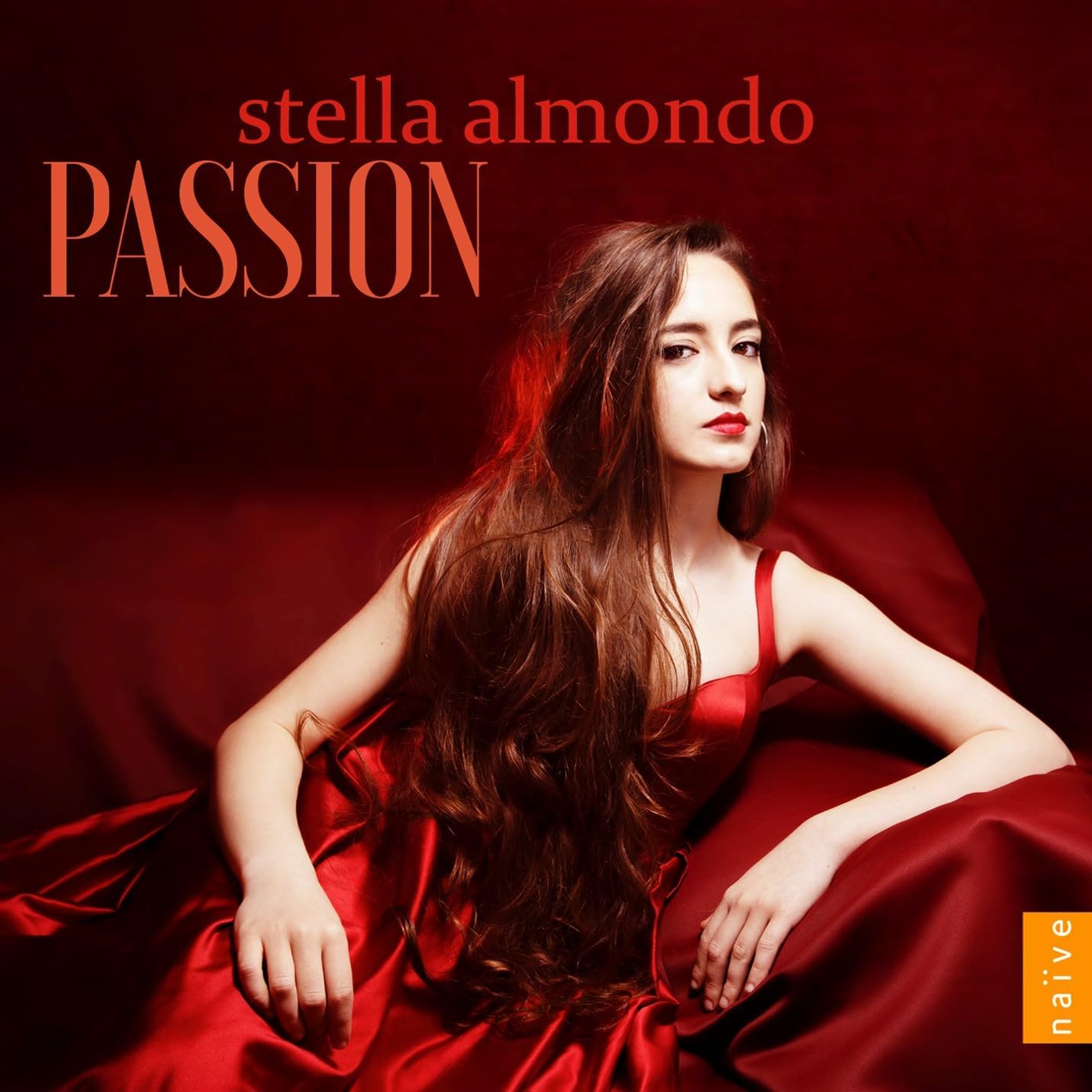 The young Monegasque pianist Stella Almondo’s debut album Passion contains heady repertoire from three fin-de-siecle Russian composers, Almondo selecting Felix Blumenfeld, Rachmaninov and Scriabin because “they share a deep-rooted Slavic intensity”. Blumenfeld was new to me, a now neglected musician once famous as a pianist, conductor and composer who counted Horowitz among his pupils. Blumenfeld’s Étude de concert is an appealing opener and Almondo deserves plaudits for exhuming four of the composer’s 24 Preludes, a sequence of “preambles dans tous les tons pour le piano”. I’m now curious to hear the full set. No. 21 in B flat is a bittersweet jewel, its opening notes recurring in No. 22, pitched a minor third lower. That Almondo was just 17 when she recorded the anthology defies belief when you hear how she tears fearlessly into the fourth of Rachmaninov’s 6 moments musicaux, and there’s a touching rendition of the Cello Sonata’s slow movement. Almando concludes with a Scriabin selection, his Piano Sonata No. 4 one of the album’s highlights, the final “Prestissimo volando” taking flight. That Almando was just 17 when she recorded this disc is quite something, and one suspects that we’ll be hearing more from her.
The young Monegasque pianist Stella Almondo’s debut album Passion contains heady repertoire from three fin-de-siecle Russian composers, Almondo selecting Felix Blumenfeld, Rachmaninov and Scriabin because “they share a deep-rooted Slavic intensity”. Blumenfeld was new to me, a now neglected musician once famous as a pianist, conductor and composer who counted Horowitz among his pupils. Blumenfeld’s Étude de concert is an appealing opener and Almondo deserves plaudits for exhuming four of the composer’s 24 Preludes, a sequence of “preambles dans tous les tons pour le piano”. I’m now curious to hear the full set. No. 21 in B flat is a bittersweet jewel, its opening notes recurring in No. 22, pitched a minor third lower. That Almondo was just 17 when she recorded the anthology defies belief when you hear how she tears fearlessly into the fourth of Rachmaninov’s 6 moments musicaux, and there’s a touching rendition of the Cello Sonata’s slow movement. Almando concludes with a Scriabin selection, his Piano Sonata No. 4 one of the album’s highlights, the final “Prestissimo volando” taking flight. That Almando was just 17 when she recorded this disc is quite something, and one suspects that we’ll be hearing more from her.
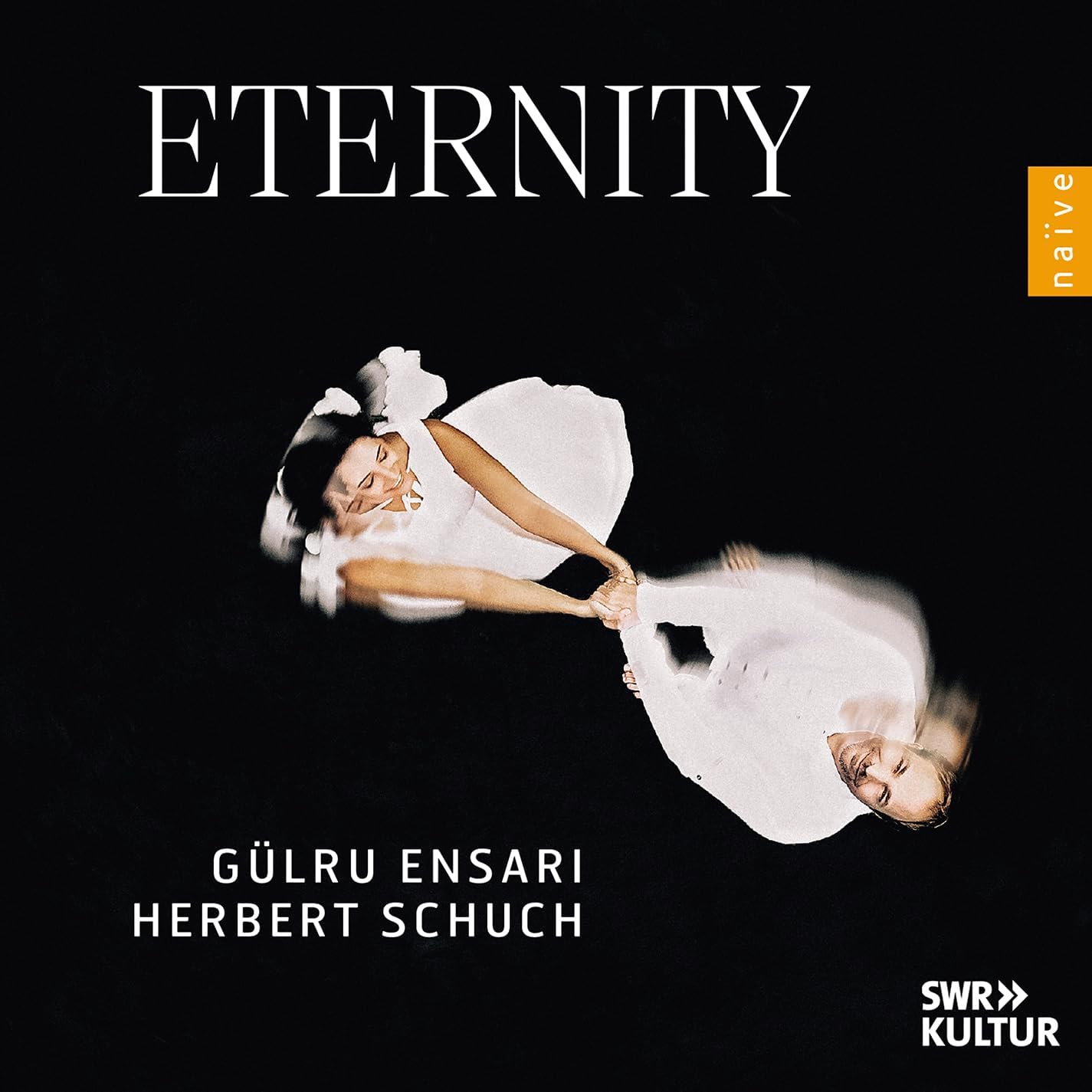
Eternity is a terrific album of two-piano repertoire from the wife-and-husband pairing of Gülru Ensari and Herbert Schuch. There’s an intriguing selection of pieces here, Schuch suggesting, rather obliquely, that Beethoven, Brahms, Messiaen and Schubert are linked by “a perceived truth”. The playing is as taut and focused as you’d expect: Schubert’s posthumously published Fantasia in F minor steals in imperceptibly, luring us in. Ensari and Schuch find plenty light alongside the shade, with an effervescent scherzo section, though Schubert’s curt, quiet close is devastating. The beginning of the “Amen du Désir” from Messiaen’s Visions de l'Amen glows. Two other extracts from the suite are programmed later on the disc; though composed in German-occupied Paris, the sense of hope always shines through, the jazzy moments in “Amen des Anges, des Saints, du chant des oiseaux” are infectious and uplifting. We get Brahms’s Variations on a Theme by Schumann, the said theme supposedly dictated to Schumann by angels, each variation beautifully characterised. Plus Beethoven’s fiendish transcription of his knotty Grosse Fuge, the tension and drama brilliantly sustained. Wonderful recorded sound - a treat.
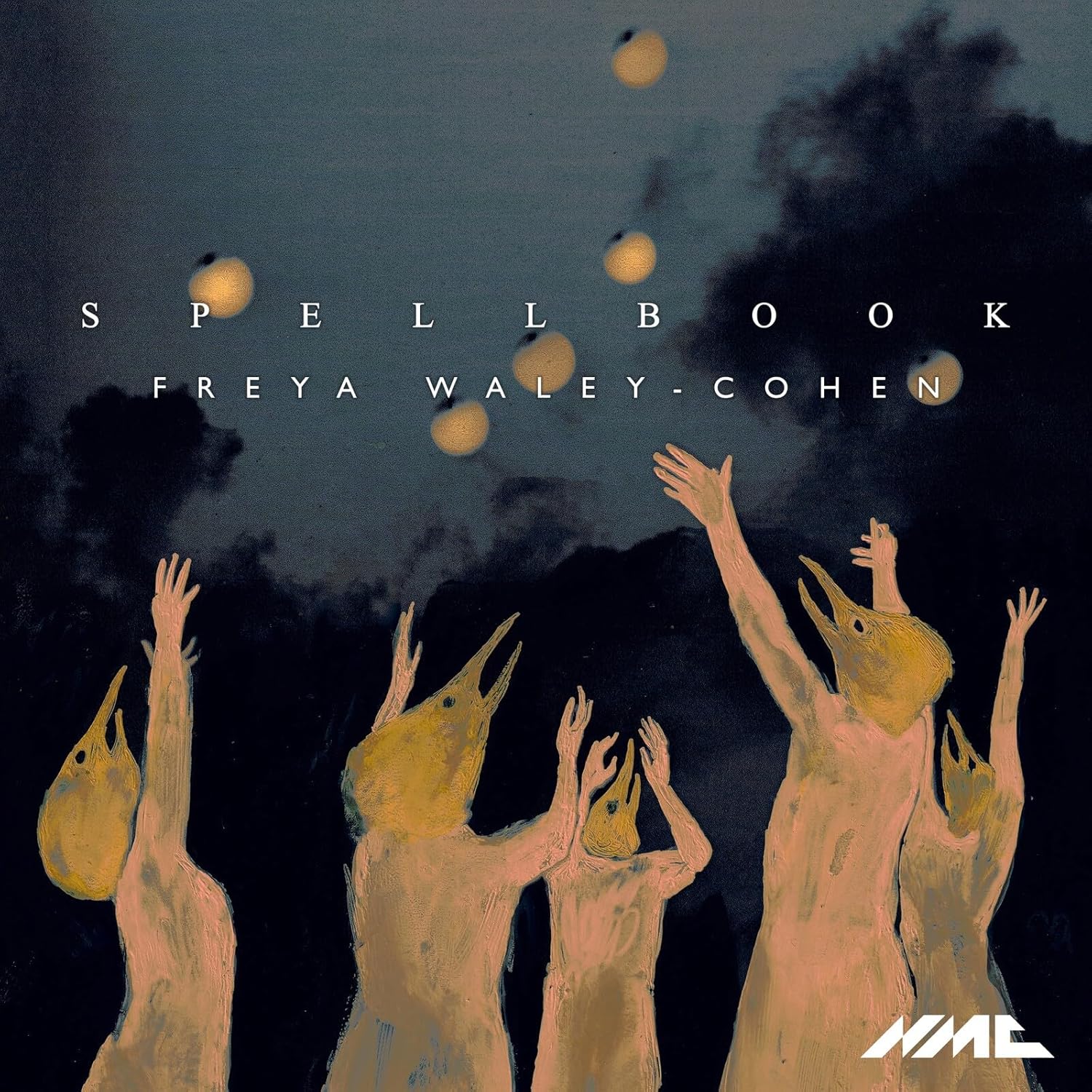 Freya Waley-Cohen: Spell Book Manchester Collective et al (NMC)
Freya Waley-Cohen: Spell Book Manchester Collective et al (NMC)
Richard Baker: The Tyranny of Fun BCMG, Chroma, Oliver Janes (basset clarinet) et al (NMC)
Tom Coult: Pieces That Disappear Anna Dennis (soprano), BBC Philharmonic/Martyn Brabbins (NMC)
The NMC label continues its stalwart work presenting portrait discs of British composers whose music deserves to be heard, and here are three more Debut Discs by Freya Waley-Cohen (b.1989), Tom Coult (b.1988) and Richard Baker (b.1972). The music is, as you would expect with NMC, disparate and individual, the performances committed and technically very impressive, and there are some interesting points of intersection – and of difference. There is a sense of playfulness common to all three composers, and allusion to extra-musical culture, whether in texted or instrumental music, and they all come recommended as representative of some currents of contemporary British music.
Freya Waley-Cohen’s disc is called Spell Book, after the biggest single piece. Before we get to that we have the string trio Conjure, also in the magic realm, which has an unsettling strangeness, the lower strings sustained while the violin (Freya’s sister Tamsin) throws out dancing fragments. Talisman is for string ensemble, but treats the 13 players of the Manchester Collective as soloists rather than a unified ensemble. It also has a ritualistic aspect, and Waley-Cohen said she was “thinking about objects that hold special power, magic and meaning to people.” The opening chords quickly dissipate into filigree lines, playful but never light-hearted, and the 13-minute-long piece constantly keeps the listener engaged.
The biggest piece is Spell Book itself: eight incantations inspired by the poetry of Rebecca Tamás, brought to life by the Manchester Collective and singers Katie Bray, Heloïse Werner and Fleur Barron. There is a more than a hint of Pierrot Lunaire about the setting of angular melody lines against an accompanying chamber ensemble, but it has if anything an even wider emotional and technical range. Sometimes the music careers, sometimes (the “Spell for Sex”) it is barely there. The singing is superlative and engrossing, and Anna Hashimoto’s clarinet playing is strikingly good.
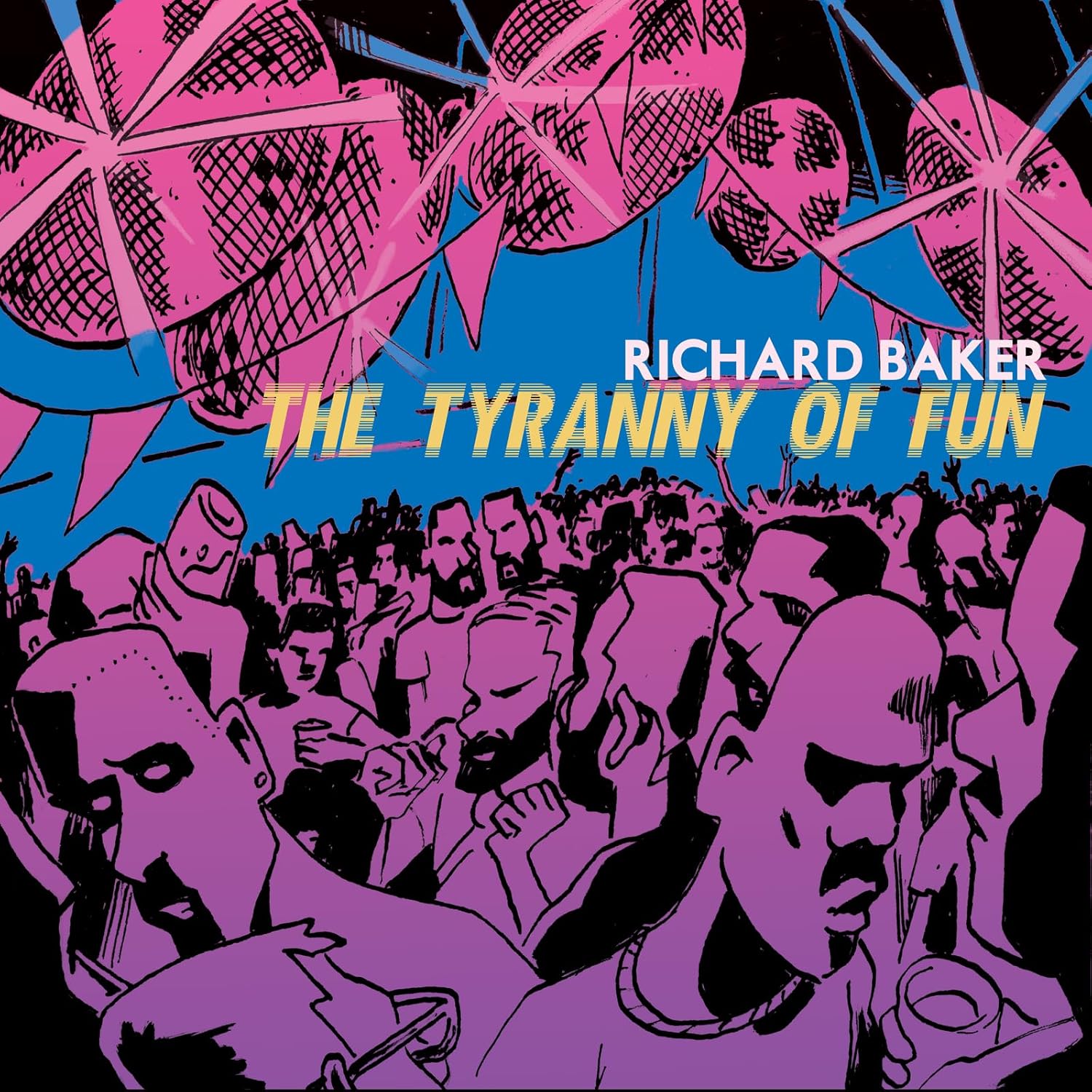 Tyranny of Fun, released back in March, is the first full-length album by Richard Baker, of chamber music composed between 1994 and 2022. His music is eclectic and immediately appealing, with a busy surface and a genial tone. Motets II, played by Chroma are jazzy and elliptical miniatures, full of fleeting gestures and not-quite-repetitions. It surprised me to learn from the booklet that they were a response to Baker’s Covid isolation: they felt to me more life-enhancing than many of the events of 2020. Baker has had a long association with the Birmingham Contemporary Music Group, the off-shoot of the CBSO, and they perform four pieces. The Tyranny of Fun (2012) is a brilliant title, and the music does indeed start in a bossy vein: thou shalt enjoy thyself. But in relaxes from there into a Stravinskian insouciance, but with half an ear to 1980s dance music. Learning to Fly (1999), a concertante work for basset clarinet (an energetic Oliver Janes) also shows the BCMG in good fettle, but perhaps the standout pieces – because they go against the grain – are the percussion duet Angelus, channelling Morton Feldman, and the charmingly elusive Crank (1994) for diatonic music box, which Baker created under the mentorship of Louis Andriessen.
Tyranny of Fun, released back in March, is the first full-length album by Richard Baker, of chamber music composed between 1994 and 2022. His music is eclectic and immediately appealing, with a busy surface and a genial tone. Motets II, played by Chroma are jazzy and elliptical miniatures, full of fleeting gestures and not-quite-repetitions. It surprised me to learn from the booklet that they were a response to Baker’s Covid isolation: they felt to me more life-enhancing than many of the events of 2020. Baker has had a long association with the Birmingham Contemporary Music Group, the off-shoot of the CBSO, and they perform four pieces. The Tyranny of Fun (2012) is a brilliant title, and the music does indeed start in a bossy vein: thou shalt enjoy thyself. But in relaxes from there into a Stravinskian insouciance, but with half an ear to 1980s dance music. Learning to Fly (1999), a concertante work for basset clarinet (an energetic Oliver Janes) also shows the BCMG in good fettle, but perhaps the standout pieces – because they go against the grain – are the percussion duet Angelus, channelling Morton Feldman, and the charmingly elusive Crank (1994) for diatonic music box, which Baker created under the mentorship of Louis Andriessen.
 The most recent of the releases is Tom Coult’s equally well-named Pieces That Disappear. The title work is for orchestra and fixed audio, played by the BBC Philharmonic under Martyn Brabbins. The composer says the piece is about “music being remembered, forgotten, misremembered, imagined or deteriorating” – the first two movements progress from an opening of assured assertiveness to a more uncertain and elusive territory, while the third alternates between these two modes. The whole thing has a confident monumentality, and the brass band-style chorale in the final movement, which dissolves and deflates into an audio sample of Schoenberg, is extremely moving. This is perhaps my favourite piece across the three albums, and certainly one I will come back to with pleasure.
The most recent of the releases is Tom Coult’s equally well-named Pieces That Disappear. The title work is for orchestra and fixed audio, played by the BBC Philharmonic under Martyn Brabbins. The composer says the piece is about “music being remembered, forgotten, misremembered, imagined or deteriorating” – the first two movements progress from an opening of assured assertiveness to a more uncertain and elusive territory, while the third alternates between these two modes. The whole thing has a confident monumentality, and the brass band-style chorale in the final movement, which dissolves and deflates into an audio sample of Schoenberg, is extremely moving. This is perhaps my favourite piece across the three albums, and certainly one I will come back to with pleasure.
Beautiful Caged Things and After Lassus are both showcases for the extraordinary soprano Anna Dennis, who weaves a lyrical spell in the first, and in the second channels a more early-music vein as Coult reworks duets by my favourite 16th century composer, both accompanied by the BBC Philharmonic and Andrew Gourlay. In After Lassus the scoring is delicate and chamber-like, allowing Dennis to float effortlessly above, in lines that gradually go from the improvisatory to the fully formed to the flat-out jazzy. Like Three Pieces That Disappear, it packs an emotional punch that makes it very rewarding listening. Bernard Hughes
- Read more Classical reviews on theartsdesk



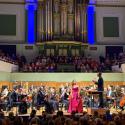










Add comment